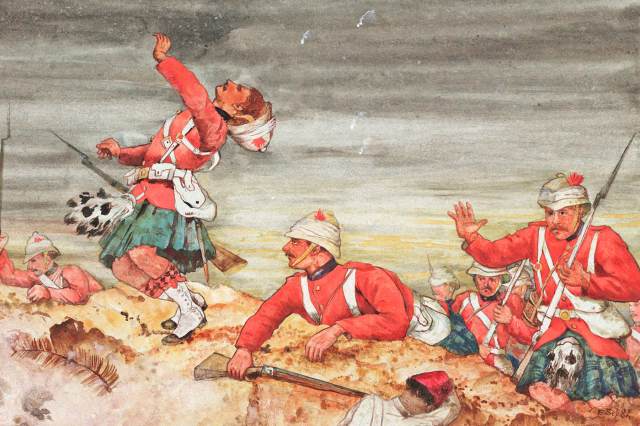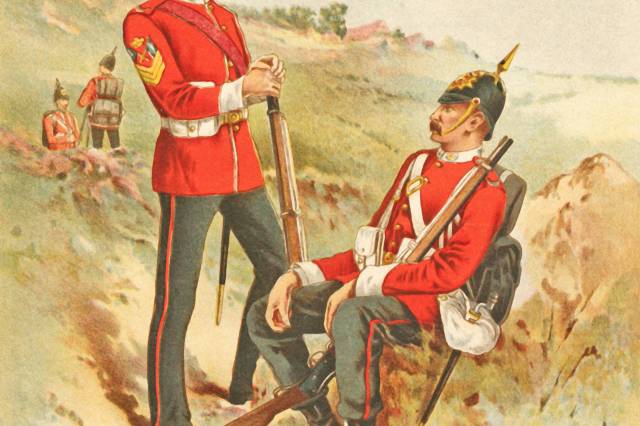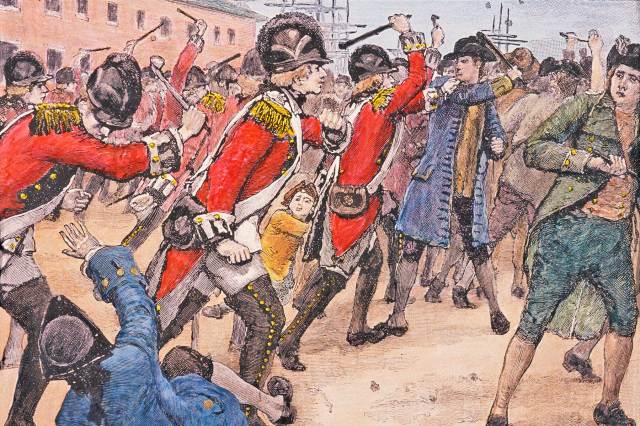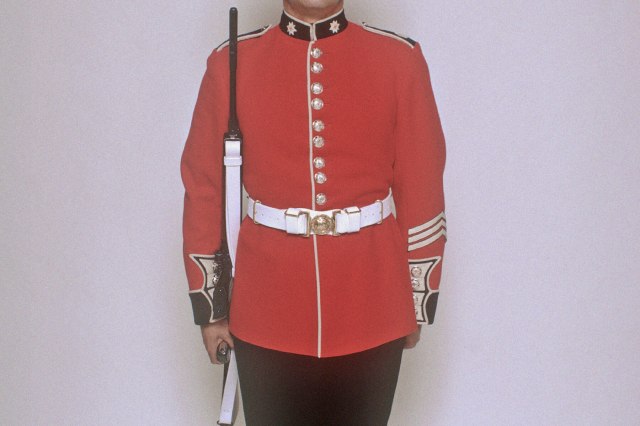HistoryFacts.com: Why Did the British Wear Red Coats?
Why Did the British Wear Red Coats?
In February 1645, during the First English Civil War, the Parliament of England created the New Model Army. This single, standing army consisted of 22,000 regularly paid, well-disciplined, and properly trained men, with promotion gained on merit. To enhance the cohesion of this force, every soldier was supplied with a standardized uniform, which included a red coat.
It wasn’t long before these soldiers were unofficially dubbed “Redcoats,” a name that stuck through many conflicts to come. British soldiers only stopped wearing red when the khaki uniform was introduced during the Second Boer War (1899-1902), but even today, red coats are worn by British soldiers on ceremonial duty.
But why the color red? It may seem strange today, when camouflage is so commonplace in the design of military uniforms, that such a noticeable color was used on the battlefield, rather than green, brown, or khaki. But there were a number of reasons why red was chosen, including battlefield strategies and the simple need for a uniform that could be produced quickly and efficiently.

Red Coats Weren’t Designed To Hide the Blood of Battle
First of all, British soldiers didn’t wear red to hide spilt blood, either their own or that of their enemies. There is no evidence to support this often-repeated explanation, and it doesn’t make much sense anyway. Not knowing that you are bleeding isn’t particularly helpful, and hiding any evidence of injuries from the enemy isn’t of much benefit amid the chaos of the battlefield. Also, a bloodstain on a red uniform would likely appear as black rather than red.

Red Wool Was Commonplace and Cheap
The most prosaic reason for the color of the Redcoats’ iconic jackets was one of simple economics. Supplying a large standing army with uniforms could be a costly business. As it happened, red wool was commonplace, cheap, and durable. While some dyes, such as kermes and cochineal, produced a deep scarlet favored by the wealthy and powerful, the wool used in the standard infantry jacket was colored red with a cheaper, brownish-red dye derived from the root of the madder plant, which had been used by numerous civilizations dating as far back as ancient Egypt.

Red Uniforms Offered Battlefield Benefits
While camouflage uniforms are standard today, they wouldn’t have served much purpose on the battlefields of old, when infantrymen walked slowly into battle in ordered and obvious columns and lines. Guns were also highly inaccurate, making it difficult to target and hit a particular individual, no matter how easy they were to see. What’s more, having uniforms that blended into the environment would have actually been detrimental. For the generals in command, being able to see exactly where their soldiers were was vital in the smoke and chaos of battle (and also made it easier to spot deserters running from the fight). For the soldiers, meanwhile, red jackets made it easier to tell friend from foe on the battlefield, and in turn avoid friendly fire.

Red Signified Prestige and Power
Apart from the more practical reasons for the Redcoats’ distinctive jackets, there was also the issue of British pride to consider. It’s been theorized that red was a preferred choice due to it being one of Britain’s national colors: red, white, and blue. The three colors appear on the Union Jack, and, more specifically, on the St. George’s Cross — the national flag of England — which depicts a red cross on a white background. Eventually, the Redcoats themselves became a symbol of British rule both at home and abroad. The use of red by imperial soldiers over a period of nearly three centuries made the bright and distinctive uniform a powerful symbol of the British Empire.



Comments
Post a Comment